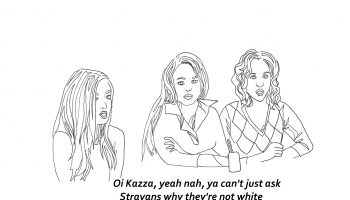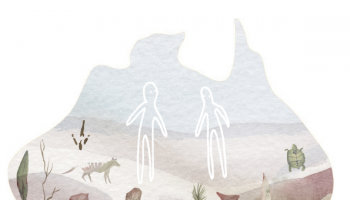To quote Lisa Simpson, “Why is it when a woman is confident and powerful, they call her a witch?”
The witch hunts that occurred in Medieval Western Europe were an enormous waste of talent and knowledge. In a time we associate with the Renaissance and discovery, the witch hunts were a sign of the misogyny that continues to plague human society. In addition to the individual lives lost, understanding of healing and midwifery was lost as these people were executed. Traditional healing skills were discredited and lost.
Western European women have been associated with sin since Christianity was established in Western Europe around the 1st century. All women were viewed as being the daughters of Eve, and were in a permanent state of punishment for the first sin. This cloud of punishment and sin that was settled above women resulted in an uneven power balance between men and women. The burden of the loss of paradise was placed on the shoulders of women.
Women were also associated with the legend Lilith, who is considered either the first man’s wife before Eve or a demon. As Adam’s first wife, Lilith viewed herself as equal to man, as she and Adam were made of the same Earth. Lilith rejects paradise, Adam, wifely duties and God. Other texts suggest Lilith is a lusty demon that haunted men over many lands, from ancient Babylon to Egypt, causing destruction and chaos wherever she flew. Witches, and women who were seen as witches, were automatically associated with the sin of Eve as women and then the demonic myth of Lilith was added to their burden. The legend of Lilith permeated and tainted the presence of independent women in medieval societies.
Prior to the 13th century of medieval Western Europe, female healers supplied the health care of lower classes. Midwives in particular were allowed great freedom in their work, as all medical thought was generally based on the Greek or Roman understanding of medicine: one that did not include women’s bodies, and generally thought that women could look after themselves – which they did, with the help of female midwives and healers.
Female healers, witches and midwives were likely to have been similar to empirical scientists of contemporary times. To keep their patients as alive as possible, they would have to know what they were doing through experience and by spreading information, just as nurses and doctors in contemporary times are reminded to never stop learning and studying.
Women healers came under suspicion on the possibility of witchcraft after the 13th century. Midwives were not particularly targeted as witches, but the Catholic and Protestant churches both regarded them suspiciously, as the pain of childbirth (and any possible complications) were considered punishment for the original sin of Adam and Eve. The practise of medicine, abortions and healing was seen as a power over life and death, a power meant for God alone.
The witch hunts became more obviously misogynistic in the late 15th century with the publication of the lovely light read “Malleus Maleficarum”. Called “The Hammer of Witches” in English, the word Maleficarum is actually a feminine word. The book includes the description of how a witch made a man’s penis fall off, which I’m just going to diagnose from the 21st century as a pretty nasty STI. The Malleus Malificarum also proclaimed “No one does more harm to the Catholic Faith than midwives”. The book had many print runs in Germany and France, becoming the equivalent of a modern day best seller.
It is unknown how many people died during the witch hunts that lasted over four centuries. The estimates of the deaths are widely disputed. These estimates range from 60 000 between the 13th and 17th centuries to a few million people. The first estimate seems quite moderate, as that only allows around 200 people per year to be killed over the entirety of Europe. It seems an even more conservative number when you consider between 1626 and 1631, 157 people were executed just in the city of Würzburg.
Regardless of the number of people killed, the loss of knowledge from these people must have been huge. Although not all people killed would have been healers, at least some of them were.
People have lived for millennia with issues such as endometriosis, PCOS and a range of other debilitating, but not generally killer diseases. The wealthy royals of Western Europe were not the only people to leave descendants into the 21st century. Did any of the people killed as witches hold the knowledge of how to help anyone suffering with these diseases?
When the Library of Alexandria burnt and the House of Wisdom destroyed, humanity lost vast amounts of knowledge. Perhaps if all these great libraries hadn’t been destroyed, then we would be living on Mars right now! Okay so that’s just speculation, but humanity did have to catch up on the lost information. Could it be that the witch hunts were a similar loss of knowledge?
Witches and women healers cared for the peasant population with simple herbal remedies like willow bark and honey. The church condemned the healing of the peasant population – sin was the cause of illness. Witches were a threat to the establishment by helping keep the enormously populated lower classes alive and helping ease women’s pain in childbirth.
When female healers were charged with witchcraft, it was because they were undermining men’s position as medical ‘professionals’. In England in the 15th century, these medical professionals were all men and schooled in Galen’s theory of humours. These men were generally only approved by the church for use by the wealthy. Accessing schooling was an issue for lower classes and all women as it was very difficult, if not impossible to gain admittance to education as a woman in Medieval Europe.
Male medical professionals most likely did not have a high success rate of healing patients, as the humours method of healing involved a lot of bleeding and leeches. They likely cost more for patients compared to lower class female healers. Seeing the local healer woman would appear to have a higher success rate and be cheaper for the ill of the lower classes. To medical professionals, these women were seen as encroaching on customers and possible income.
Witches may have been empirical scientists, as traditional herbal remedies must have been tested through trial and error. Honey and garlic are both anti-bacterials and willow bark has salicylic acid, a part of the active ingredient in aspirin. The lower class healers would have passed information along to one another. I hope that some women once talked about allergies, or complications in childbirth – “Mistress Baker’s little knave wast large, the birthing tooketh days and wast hard worketh!” they might have said.
After the medieval period, at the end of the witch hunts in the 16th century, women had roles as palliative nurses as nuns in convents. Women’s roles in medicine became more regulated and downplayed. Nurses as we know it in contemporary times came around with Florence Nightingale’s teachings, with nurses being trained to be subservient to doctors and to act as maids and active carers. Doctors were not meant to have time for patients – they instructed what needed to happen, and the nurses acted upon the instructions.
Today there is little acknowledgement of the loss of healing knowledge that may have occurred in Western Europe during the centuries of witch hunts.
Since this period of time in European history, women, especially independent women, have been associated with witches, evil and demons. Women that subverted the norm by applying knowledge, and being independent in their work, were targeted as witches as they undermined the patriarchal power of the Church and State. Across the ages, any woman who could possibly cause threat to systems of power were subdued or removed. The witch hunts were a part in a continued trend in society of misogyny and an imbalance of power, where men hold onto the majority. Women should celebrate being called witches. It seems to refer to all wonderful things – we are independent, intelligent and causing change.
Illustration by Emily Dang


